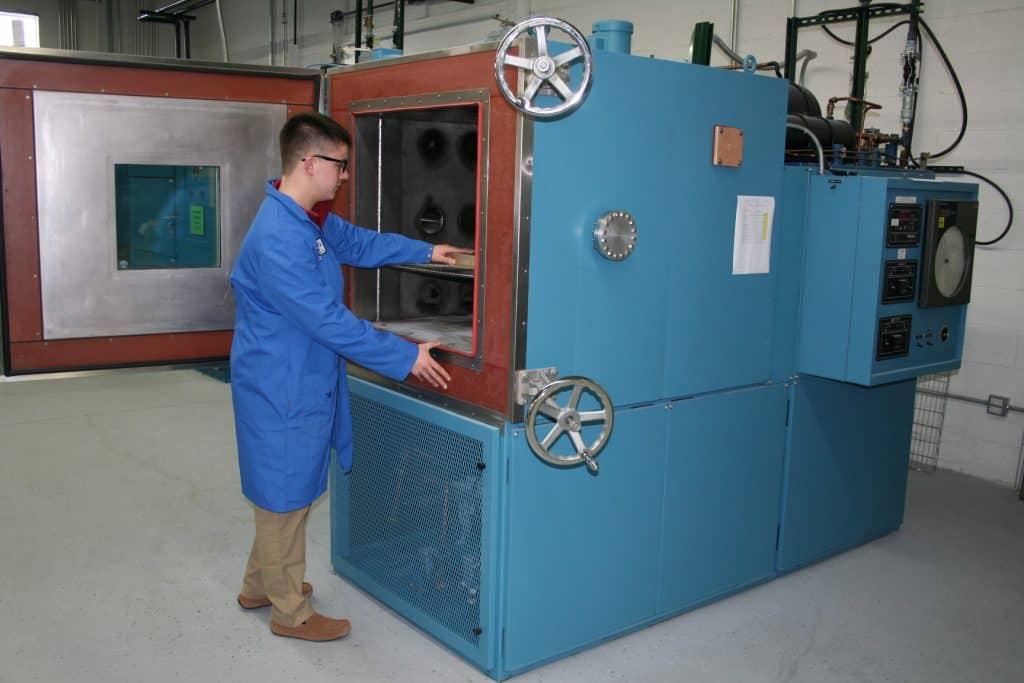
MIL-STD 202 establishes uniform methods for testing electronic and electrical component parts, including basic environmental tests to determine resistance to deleterious effects of natural elements and conditions surrounding military operations and physical and electrical tests. For the purpose of this standard, the term “component parts” includes such items as capacitors, resistors, switches, relays, transformers, inductors and others. This standard is intended to apply only to small component parts, weighing up to 300 pounds or having a root mean square test voltage up to 50,000 volts unless otherwise specifically invoked.
MIL-STD 202 outlines the suitable conditions obtainable in the laboratory that give test results equivalent to the actual service conditions existing in the field, and to obtain reproducibility of the results of tests. MIL-STD 202 tests are not to be interpreted as an exact and conclusive representation of actual service operation in any one geographic location, since the only true test for operation in a specific location is an actual service test at that point.
The test methods established in MIL-STD 202 for environmental, physical, and electrical tests shall also apply, when applicable, to parts not covered by an approved military specification, military sheet form standard, specification sheet, or drawing. The D.L.S. technical staff can provide guidance in this area to ensure proper testing paths are appropriate.
MIL-STD 202 tests are divided into three classes: Test methods, see below, numbered 101 to 199 inclusive, cover environmental tests; those numbered 201 to 299 inclusive cover physical characteristics tests; and those numbered 301 to 399 inclusive cover electrical characteristics tests.
The most current revision of MIL- STD 202, Revision H, replaced Revision G. Updated revisions of the test methods are indicated by a letter following the method number.
D.L.S. can support MIL-STD 202 testing requirements, as well as MIL-STD 461 for EMI/EMC and MIL-STD 810 for Environmental requirements. The technical staff can provide development assistance in the form of test plans and procedures, as well design assistance. Contact D.L.S. today to review your next project.
MIL STD 202 Rev H
Method Tests
Environmental Tests:
-101 Salt atmosphere (corrosion) (formerly called salt spray)
-102 Superseded by Method 107 (see 6.3)
-103 Humidity (steady state)
-104 Immersion
-105 Barometric pressure (reduced)
-106 Moisture resistance
-107 Thermal shock
-108 Life (at elevated ambient temperature)
-109 Explosion
-110 Sand and dust
-111 Flammability (external flame)
-112 Seal
Physical Characteristics Tests:
-201 Vibration
-202 Superseded by Method 213 (see 6.3)
-203 Random drop
-204 Vibration, high frequency
-205 Superseded by Method 213 (see 6.3)
-206 Life (rotational)
-207 High-impact shock
-208 Solderability
-209 Radiographic inspection
-210 Resistance to soldering heat
-211 Terminal strength
-212 Acceleration
-213 Shock (specified pulse)
-214 Random vibration
-215 Resistance to solvents
-216 Superseded by Method 210 (see 6.3)
-217 Particle impact noise detection (PIND)
Electrical Characteristic Tests:
-301 Dielectric withstanding voltage
-302 Insulation resistance
-303 DC resistance
-304 Resistance temperature characteristic
-305 Capacitance
-306 Quality factor (Q)
-307 Contact resistance
-308 Current-noise test for fixed resistors
-309 Voltage coefficient of resistance determination procedure
-310 Contact-chatter monitoring
-311 Life, low level switching
-312 Intermediate current switching